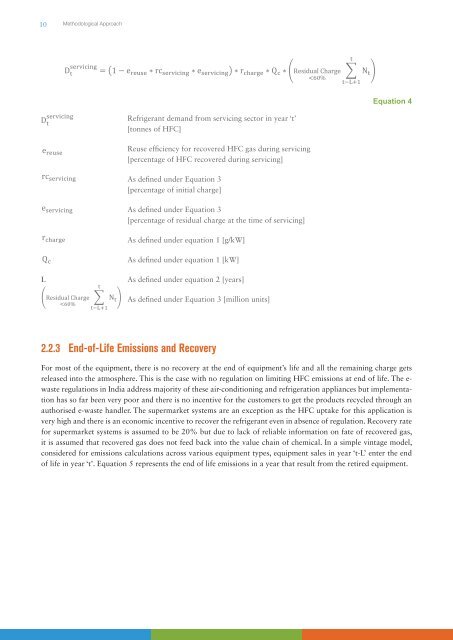Hydrofluorocarbon Emissions-Shakti Sustainable Energy Foundation
One such critically important category of gases is hydrofl uorocarbon (HFC). HFCs are potent greenhouse gases and are expected to contribute signifi cantly to global warming by 2050 (IPCC/TEAP, 2006; Velders et al., 2009; Gschrey et al., 2011; Miller & Kuijpers, 2011; Höglund-Isaksson et al., 2013). Read more information visit: http://shaktifoundation.in/report/indias-long-term-hydrofluorocarbon-hfc-emissions-detailed-cross-sectoral-analysis/
One such critically important category of gases is hydrofl uorocarbon (HFC). HFCs are potent greenhouse gases and are expected to contribute signifi cantly to global warming by 2050 (IPCC/TEAP, 2006; Velders et al., 2009; Gschrey et al., 2011; Miller & Kuijpers, 2011; Höglund-Isaksson et al., 2013). Read more information visit: http://shaktifoundation.in/report/indias-long-term-hydrofluorocarbon-hfc-emissions-detailed-cross-sectoral-analysis/
You also want an ePaper? Increase the reach of your titles
YUMPU automatically turns print PDFs into web optimized ePapers that Google loves.
10<br />
Methodological Approach<br />
<br />
<br />
<br />
<br />
<br />
<br />
Equation 4<br />
<br />
<br />
<br />
<br />
<br />
<br />
<br />
L<br />
<br />
<br />
<br />
<br />
<br />
Refrigerant demand from servicing sector in year ‘t’<br />
[tonnes of HFC]<br />
Reuse efficiency for recovered HFC gas during servicing<br />
[percentage of HFC recovered during servicing]<br />
As defined under Equation 3<br />
[percentage of initial charge]<br />
As defined under Equation 3<br />
[percentage of residual charge at the time of servicing]<br />
As defined under equation 1 [g/kW]<br />
As defined under equation 1 [kW]<br />
As defined under equation 2 [years]<br />
As defined under Equation 3 [million units]<br />
2.2.3 End-of-Life <strong>Emissions</strong> and Recovery<br />
For most of the equipment, there is no recovery at the end of equipment’s life and all the remaining charge gets<br />
released into the atmosphere. This is the case with no regulation on limiting HFC emissions at end of life. The e-<br />
waste regulations in India address majority of these air-conditioning and refrigeration appliances but implementation<br />
has so far been very poor and there is no incentive for the customers to get the products recycled through an<br />
authorised e-waste handler. The supermarket systems are an exception as the HFC uptake for this application is<br />
very high and there is an economic incentive to recover the refrigerant even in absence of regulation. Recovery rate<br />
for supermarket systems is assumed to be 20% but due to lack of reliable information on fate of recovered gas,<br />
it is assumed that recovered gas does not feed back into the value chain of chemical. In a simple vintage model,<br />
considered for emissions calculations across various equipment types, equipment sales in year ‘t-L’ enter the end<br />
of life in year ‘t’. Equation 5 represents the end of life emissions in a year that result from the retired equipment.

















